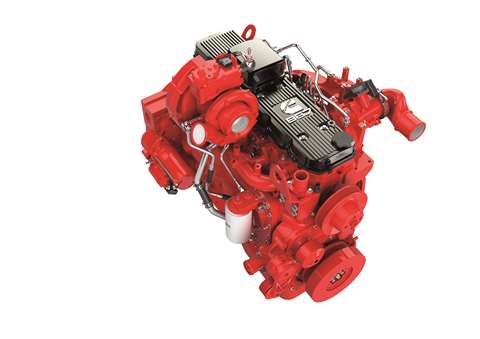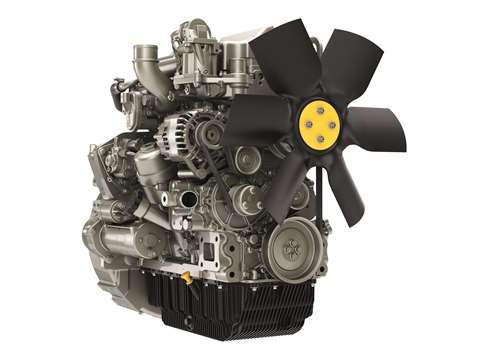Engines: The rental engine
29 April 2019
Stricter engine emission regulations are a fact of life in many of the world’s market, including North America and Europe, and one consequence of that – aside from the very welcome benefits to the environment – is higher costs of equipment.
To offset these higher costs – which are passed on to buyers, including rental companies – there are some clear tangible benefits, such as the ability for machinery to operate in the growing number of towns and cities operating low emission zones (there are an estimated 224 of these in Europe alone, with London being a prime example).

Engine manufacturers, meanwhile, are also appealing to machine owners and end users through benefits such as lower total cost of operation (TCO), including longer service intervals, high-tech telematics capabilities, and more down-to-earth features to prevent engines from being improperly used.
The Shift to Stage V engines in Europe provides the latest example of this wider trend, with the world’s engine producers highlighting the benefits of their Stage V power units.
Cummins, for example, says its Stage V engines – which are called Performance Series in North America – provide “significant economic benefits to the rental market”. Steve Nendick, Cummins marketing communications director, says its 3.8 to 9 llitre (100 hp to 420 hp) engines deliver, on average, a 10% increase in power and a 20% higher torque than their Stage IV counterparts. “This improved power density enables OEMs to increase machine capability”, says Nendick. “Rental companies will see more value for their investment.”
Service intervals have been increased and, says the company, the flexibility of the Stage V engine platform “gives maximum flexibility on where the machine can be sold in its second life, helping to maintain strong residual values.”
Perkins is another engine manufacturer that has been marketing itself to rental companies, hoping that this will lead rental companies to request or specify Perkins engines when they purchase new equipment.

Providing support
One aspect of this is a dedicated ‘Rental Support Programme’ that it runs in both North America and Europe, helping rental companies with engine training, warranty claims, engine diagnostic and parts ordering. (Perkins is not alone offering this kind of service – Kohler engines in the USA has run a Rental Partner Program since 2013.)
Perkins is also offering tools to make ownership easier. A good example is Perkin’s My Engine App – a free download from the Apple and Google app stores – which helps owners manage, service and repair engines in their fleets. It is available in eight languages, including Chinese.
Of course, as far as rental companies are concerned, it is small engine sizes that are often just as important as the larger power units used in big machines such as excavators and wheeled loaders.
Here, Perkins used the recent ARA rental show in Anaheim, California, to launch its new 403J-11T, a three-cylinder 24hp (18.4kW) engine particularly suited to power small construction equipment that is popular among rental fleets.
“For this critical power of 24hp, OEMs need to balance multiple engine characteristics to get the best match for their machines,” says Oliver Lythgoe, marketing manager for small engines at Perkins. “The 403J-11T will be particularly suitable for machines that need good torque performance, but also need the smallest package possible.
Deutz used the same show in Anaheim to introduce two sub-19kW power units. The D1.2 is a three-cylinder, 1.2 litre engine with output of up to 19kWm and it can be used as a hybrid in combination with the company’s new electric E-DEUTZ products. The other engine is the D1.7.
These, says Deutz, will “better meet the needs of customers who want to efficiently power machines such as aerial platforms, welders, trenching equipment and mini skid-steer loaders – machines that are very much in demand in the rental industry.”
“The rental industry is a growing market for our products”, says Robert Mann, Deutz Corp president and CEO, “and getting feedback from customers and dealers is crucial to ensuring that we don’t just meet expectations, but exceed them.”
Also in the small engine category, USA-based Briggs & Stratton has taken its approach to the rental market in a number of ways, first by acquiring brands that produce machines favoured by rental – including Allmand and Billy Goat – and second, by developing engines designed with rental applications in mind.

Attractive to rental
Its Stage V compliant Vanguard 200, for example, which was launched in 2018, is designed to attract rental buyers, with a focus on low cost of ownership and features to enhance productivity. It claims the engine has 15% less vibration than its biggest competitor and is 40% quieter. It also claims the oil service interval of 200 hours is double the industry norm, and its TransportGuard system eliminates problems associated with users forgetting to turn off the fuel supply before transporting equipment back to the store.
The company’s focus on rental will have helped it to gain approval of European rental company Boels Rental, which is looking to use Vanguard engines on the machines that it buys.
Guy Cremer, Director of Fleet Operations at Boels, said, “The new generation of Vanguard single-cylinder engines offers many game-changing improvements. The engines allow us to cut our equipment service intervals almost by half and drop our oil waste and recycling, thus reducing the environmental impact of our fleet.”
He added that, although equipment suppliers usually select the engines for their equipment, Boels would make clear its preference for Vanguard engines going forwards.
With the Internet of Things (IoT) and telematics becoming more important, engine suppliers are helping OEMs offer customers sophisticated fleet management tools.
While this has become common in mid- and large-sized engines, German supplier Hatz will make a big statement at Bauma with the world launch of IoT-enabled small engines, with its E1 single-cylinder, electronically controlled engines up to 12kW.

Internet of Things
Hatz says the E1 engines will be the world’s first single-cylinder units with electronically controlled fuel injection system and a digital control unit. This will allow them to be connected via the IoT, giving equipment users and owners access to data on machine use for smaller products such as mobile lighting towers and gensets. The company will have 5kW, 8kW and 12kW engines using the E1 platform ready for the start of 2020.
Bernhard Richter-Schützeneder, Director Sales and Marketing at Hatz, said; “With our new E1 technology, Hatz offers the platform for the next logical step, for the first time integrating machines with small engines into the advancing world of digitisation”.
The company is also continuing to develop hybrid diesel-electric powerpacks for lighting tower and gensets. Its customers in this area include Atlas Copco and the UK’s TCP (Taylor Construction Plant).
The topic of hybrid and electrification systems is a whole new discussion, but for the time being, diesel is far from dead.
Engine highlights
- Allison Transmissions said its DynActive Shifting technology offers fuel savings of up to 6%. DynActive is a new feature integrated in Allison’s FuelSense 2.0 software, which is also available as an aftermarket product.
- Honda Engines has introduced a new, high-output Honda GX50 engine, expanding its Mini-Four Stroke lineup with a more powerful model. Joining the GX25 and GX35 models, it is described as ideal for rental, industrial, construction and professional landscape applications.
- The Kohler Flex engine platform for Kohler Direct Injection (KDI) diesel engines is designed to meet every emissions standard in the world. Different after-treatment devices are integrated in various combinations to meet emissions regulations for every region.
- Yanmar has developed gas-powered industrial engines that use LPG (liquid petroleum gas) and meet US EPA Tier2, CARB Tier4 and EU Stage V regulations. The two new clean-burning models are the 45kW output 4TN88G and the 4TN98G, which is a 63.0kW unit.
- Volvo Penta has developed a range of Stage V engines for off-road applications, which are designed to optimise productivity, uptime and total cost of ownership (TCO). Fuel consumption is about 5% lower that the equivalent Stave IV engines, and the oil change service interval has been extended from 500 to 1,000 hours.
STAY CONNECTED



Receive the information you need when you need it through our world-leading magazines, newsletters and daily briefings.
CONNECT WITH THE TEAM






